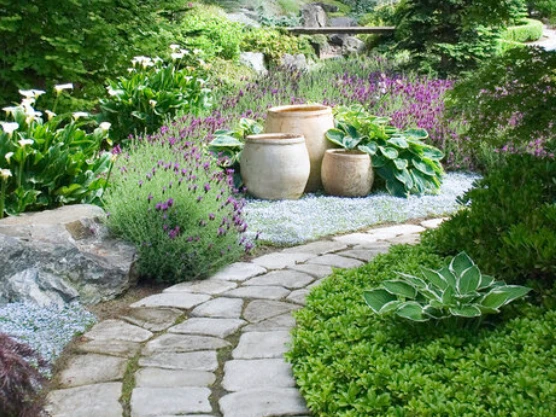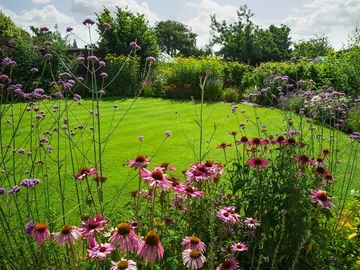Transforming your outdoor space into a beautiful and functional haven requires thoughtful planning and execution. Landscape gardening principles offer a framework to achieve this, guiding you in creating a cohesive and aesthetically pleasing design. Let's explore these 12 key principles:
1. Enclosure:
Create a sense of definition and intimacy in your garden. Use fences, hedges, walls, or strategically placed plants to establish boundaries and outdoor "rooms."
2. Shape and Form:
Consider the three-dimensional qualities of plants and hardscapes. Play with contrasting shapes like rounded shrubs against a rectangular patio for visual interest.
3. Framing the View:
Direct the eye's journey within the garden. Use plants or structures to frame desirable views, while screening out any unwanted visuals.
4. Entry:
Design a welcoming and defined entrance to your garden. This could be an archway, a paved pathway, or a cluster of flowering plants.
5. Focal Point:
Create a central point of interest that draws the eye. This could be a sculpture, a water feature, or a stunning specimen plant.
6. Structures:
Incorporate structures like pergolas, gazebos, or pathways to enhance functionality and add visual appeal. Ensure they complement the overall style of your garden.
7. Proportion and Scale:
Maintain a balance between the size of your garden, the plants you choose, and the hardships you incorporate. Avoid overwhelming a small space with overly large elements.
8. Balance:
Arrange elements in your garden to create a sense of visual equilibrium. This can be achieved through symmetrical or asymmetrical layouts, depending on the desired effect.
9. Rhythm and Repetition:
Create a sense of flow and unity by repeating design elements throughout the garden. This could be through the use of similar colours, textures, or plant types.
10. Colour:
Utilise colour strategically to create mood and ambiance. Consider seasonal blooms, foliage colours, and hardscape materials to achieve a harmonious palette.
11. Texture:
Play with the textures of plants and hardscapes for added visual depth. Combine smooth stones with soft, feathery foliage or rough bark with sleek metal elements.
12. Sustainability:
Embrace sustainable practices by selecting native plants adapted to your climate, reducing water usage through xeriscaping techniques, and incorporating features that attract pollinators. A report by Landscape and Amenity shows that garden landscaping can enhance property market price by up to 77%, surpassing other upgrades like extensions. It offers the greatest return on investment, with a 20% increase to a home’s worth.
By understanding and applying these principles, you can transform your outdoor space into a personal sanctuary, a flourishing garden retreat tailored to your vision and lifestyle. Remember, landscape gardening is an ongoing journey of creativity and connection with nature. Enjoy the process!
 Continue with Facebook
Continue with Facebook
 Continue with Email
Continue with Email














